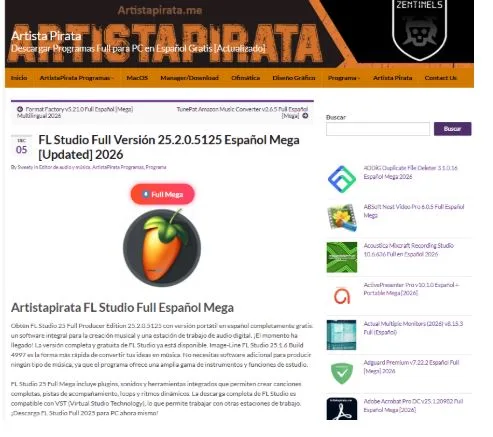The Democratization of ERP: Cloud-Based Systems for Small Operators
For decades, Enterprise Resource Planning (ERP) systems were synonymous with large corporations. Names like SAP, Oracle, and Microsoft Dynamics became the backbone of multinational operations, handling everything from finance and inventory to HR and logistics. But for small and medium-sized businesses (SMBs), these platforms were largely out of reach—too expensive, too complex, and too resource-heavy to manage.
That landscape is changing. Cloud-based ERP systems, driven by new software models and accessible automation, are democratizing the power of enterprise tools for smaller operators. In 2025, small businesses no longer need multimillion-dollar budgets or IT departments to run like their enterprise counterparts. The shift is leveling the playing field, giving SMBs a chance to compete on efficiency, visibility, and customer experience.
Why ERP Historically Excluded Small Operators
Traditional ERP deployments came with steep costs:
– Licensing fees that could run into six or seven figures.
– Implementation timelines stretching 12–24 months.
– Specialized IT talent required to manage custom code and integrations.
For small businesses operating on tight margins, these barriers made ERP inaccessible. Instead, many relied on spreadsheets, siloed accounting software, and fragmented inventory tools. The result: a lack of visibility and constant firefighting across operations.
The Cloud Changes Everything
The rise of cloud-native ERP platforms—like NetSuite, Odoo, Zoho, and newer vertical-specific solutions—has radically reduced entry barriers:
– Subscription pricing replaces huge upfront licensing.
– Faster implementation (weeks or months, not years).
– Mobile-first interfaces tailored to non-technical operators.
– Scalable modules so businesses can start small and grow into the system.
According to a report by Gartner, over 60% of new ERP deployments in 2024 were cloud-based, with SMB adoption climbing fastest. This indicates not only a technology shift but also a cultural one—small operators are realizing they don’t need to run enterprise-sized teams to access enterprise-grade visibility.
Where SMBs Benefit Most
The democratization of ERP isn’t just about affordability; it’s about practical leverage. The most impactful areas include:
1. Inventory & Supply Chain Visibility
Small retailers often struggle with under- or over-stocking. Cloud ERP systems provide real-time tracking, automated reorder points, and alerts for supply chain disruptions.
🔗 Modonix resource: https://modonix.com/the-truth-about-how-to-build-an-inventory-alert-system-with-zero-dev-skills/
2. Pricing and Margin Control
ERP platforms integrate finance with sales, enabling SKU-level margin analysis. This helps operators avoid blind discounting—a critical advantage as small businesses navigate inflationary pressures.
🔗 Modonix resource: https://modonix.com/how-to-build-smart-campaigns-around-product-margins/
3. Automated Workflows
No more juggling spreadsheets. Cloud ERP allows automation of billing, reporting, and compliance tasks—freeing operators to focus on growth.
🔗 External reference: McKinsey’s 2024 report highlights how automation delivers up to 30% efficiency gains in SMB operations.
4. Customer Experience
Integrated CRM modules give SMBs the ability to track the full customer journey—from first contact to post-purchase support—mirroring what larger competitors offer.
🔗 External reference: Salesforce notes that 88% of customers say experience matters as much as product quality.
## ERP in Emerging Markets
ERP democratization is particularly transformative in emerging economies. In regions like Africa, MENA, and Southeast Asia, small operators are leapfrogging legacy systems and going straight to mobile-first, cloud-based ERP.
The World Bank notes that digital transformation in Africa has accelerated small-business productivity, with cloud tools playing a key role. Similarly, Statista reports that cloud ERP adoption in Asia-Pacific is projected to grow at 13% CAGR through 2030.
A Smarter, Leaner Approach
One of the misconceptions is that adopting ERP means “going big” all at once. In reality, SMBs can:
– Start with one or two modules (inventory + finance).
– Roll out in phases to avoid disruption.
– Leverage no-code integrations to connect ERP with existing tools like Shopify, QuickBooks, or PayPal.
🔗 Modonix resource: https://modonix.com/automate-your-weekly-ad-report-with-google-sheets-ga4/
This modularity makes ERP less intimidating and more actionable for the average small operator.
The Risks to Watch
ERP is not a silver bullet. Common pitfalls include:
– Over-customization: too many tweaks can create new silos.
– Under-training: staff need onboarding to actually use the system.
– Poor vendor choice: not all “ERP-lite” platforms are created equal; scalability matters.
But these risks pale compared to the opportunity cost of not systematizing. In today’s environment, competing without operational visibility is like flying blind.
## Looking Ahead: ERP as the Default for SMBs
The future of ERP lies in accessibility. Just as SaaS redefined software for startups, cloud ERP is redefining operations for small businesses. Within the next five years, it’s likely that ERP—or ERP-like systems—will be as common among SMBs as accounting software is today.
As IDC puts it, “Cloud ERP is no longer a question of if SMBs will adopt, but when.”
For small operators, the call to action is clear: don’t wait until growth makes chaos unbearable. Start small, adopt smart systems, and scale into the future.
## Sources (External)
– Gartner – Cloud ERP adoption trends, 2024 report. https://www.gartner.com/doc/reprints?id=1-2JBYACTG&ct=241112&st=sb
– McKinsey & Company – Automation efficiency gains in SMB operations, 2024.https://www.mckinsey.com/capabilities/quantumblack/our-insights/the-state-of-ai-2024
– Salesforce – Customer experience survey, 2024. https://www.salesforce.com/resources/articles/customer-expectations/
– Statista – Cloud ERP market growth projections (Asia-Pacific).
– IDC – SMB ERP adoption outlook.https://www.fortunebusinessinsights.com/enterprise-resource-planning-erp-software-market-102498





